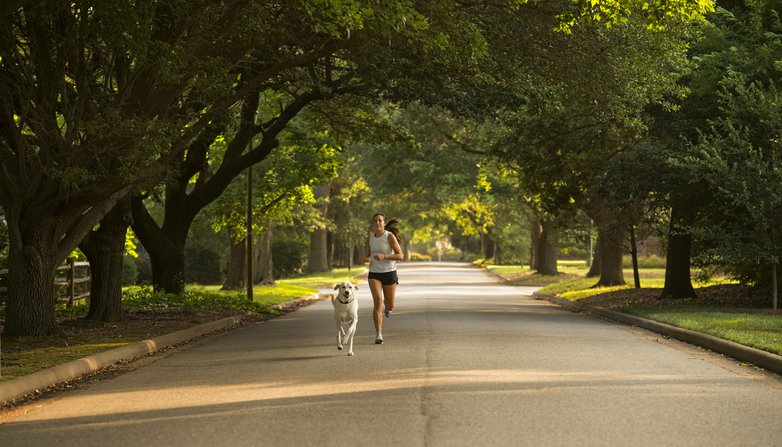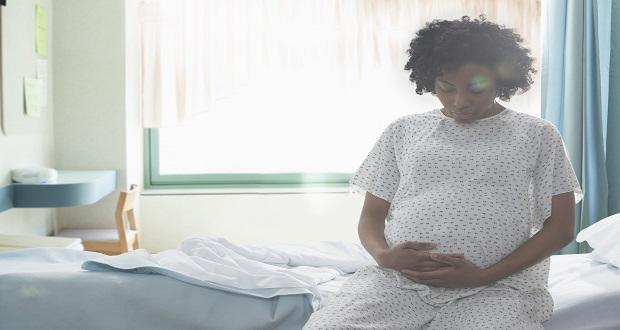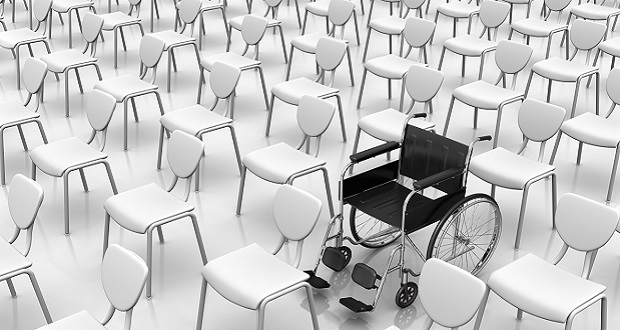
“Safety and security don’t just happen, they are the result of collective consensus and public investment. We owe our children, the most vulnerable citizens in our society, a life free of violence and fear.”
— Nelson Mandela
In her introduction to this series, “Storytelling Beyond Numbers,” Learning and Innovation Manager Leigh Morrison highlighted an imperative question that influences our entire ecosystem, from policy making to personal decision making: What statistics have you seen or heard cited to tell a story that deserves more nuance or unpacking?
When I think about that question, our definition of “safest” or “best” neighborhoods come to mind. In particular, how do we define and live by our definitions of safety? As Nelson Mandela stated profoundly in the quote above, safety isn’t inherent — it is learned and curated. As a society, we inform ourselves through a heavy reliance on rankings, crime statistics, “best lists,” and dominant narratives from family and friends. We expend a lot of brain power on trying to find the “best place to live” with little attention to interrogating these “truths,” or even considering whether a specific place is truly unsafe or if we are just outside of our comfort zone. It can be instructive to ask ourselves some probing questions, such as: Am I worried because someone told me I should be worried? Is it just that I haven’t seen so many people who look and live differently than me? And, most importantly, is how I am defining safety actually not safe, thereby creating unintended harm?
As a society, we inform ourselves through reliance on rankings, crime statistics, and dominant narratives from family and friends. We find the 'best place to live' with little attention to interrogating these 'truths.' Click To TweetPrior to the COVID-19 pandemic, I wrote about unpacking a conversation of stereotyping neighborhoods and communities in the growing context of gentrification and systemic racism. Since then, the relevance of this conversation has heightened with a spike in violent crimes across the country in 2020 (for the first time in decades), the increased physical danger (from the spread of COVID-19), increase in hate crimes and volatility (from civil unrest to police brutality), and the growing remote workforce and overlap in living and working environments. As people are rethinking their boundaries and needs for safety, these sentiments and attitudes toward certain neighborhoods (and not coincidentally Black and Brown neighborhoods) have worsened. I still know and witness many of my “progressive” peers who will happily support businesses and go for entertainment across a city, but when it comes to where they live, their narrative switches from enthusiasm to fear. For example, “I like to go to the restaurants in X area, but I would never live there.” Or, “Yeah, but there are a lot of homeless people so watch out.” Or the most common: “It’s fine during the day, but I wouldn’t go there at night.”
As frustration usually boils inside of me when I hear comments like the above, I recognize these conversations are a make or break in confirming one’s skewed perception of safety. Now I ask: What do you mean by that? What specifically makes this area feel unsafe, and is this reality or is it merely perception?
The fundamental question at play here is: What is being “safe,” and how do our ways of measuring and defining safety need to change to live in a world where everyone can truly thrive and be safe?
The fundamental question at play here is: What is being 'safe,' and how do our ways of measuring and defining safety need to change to live in a world where everyone can truly thrive and be safe? Click To TweetLists that share the “best cities to live in” or “safest neighborhoods in the area” do not tell the whole story, or even measure safety in a way that is conducive to all communities, especially for Black, Indigenous, and other people of color. After doing a basic overview of some popular neighborhood assessment tools and methodologies of websites such as Niche’s Best Places to Live ranking, NeighborhoodScout’s Top 100 Safest Cities list, WalletHub’s Safest Cities in America, and SafeWise’s The State of Safety in America, it’s inevitable that, as the SafeWise methodology says in itself, safety is subjective and means something different to everyone. While there have been some minor improvements in and expansion of how safety is being measured (for example, COVID vaccination rate was factored into the SafeWise and WalletHub surveys, while racial diversity and self-reported lived experience was factored into the Niche assessment), these small considerations are weighted minimally and are superseded by criminal, financial, and educational statistics that do not tell the whole story. Yet we continue to fall back on statistics and buzzy headlines without considering the social inequities that have driven these methodologies and lists in the first place.
Unlearning: Common Measures Factored Into Neighborhood or Community Safety
Below are some of the factors that have been included in rankings of neighborhoods and communities, as well as some other considerations that could help us not only be more accurate, but also unlearn harmful perceptions of people rooted in years of classism, racism, redlining, and policing inequities.
Reported Crimes Per Capita: An obvious and common-sense correlation we have adopted is lower crime statistics equals a safer community. In theory, this would be accurate, but in implementation it is misconstrued due to how and what is and isn’t considered a crime. In fact, many of us overestimate, and therefore overgeneralize, crime: The SafeWise safety report shared that nearly 7 in 10 people believe crime is on the rise, despite crime rates decreasing consistently for the past two decades (with the exception of violent crime in 2020). Yet, when looking at high crime or “dangerous” neighborhoods, geographic researchers have found that the crime itself typically happens between 1-5% of the blocks in the city, and within those streets, the crimes involve often less than 1% of the neighborhood’s population. In a “safe” neighborhood or community, you see similar patterns, but less reported crime, thus less public concern and higher rankings of safety.
A correlation we have adopted is lower crime statistics equals a safer community. In theory, this would be accurate, but in implementation it is misconstrued due to how and what is and isn’t considered a crime. Click To TweetThus, we create a safe/unsafe dichotomy based on how much airtime crimes receive and the repeated neighborhood or city name that we hear. The problem is that our statistics are limited by what is reported. It is no surprise that access to wealth decreases reported crime — those with money have a better chance of lawyering up and paying large fees to avoid or reduce criminal implication. Therefore, what we see in crime statistics can be misleading at best, if not discriminatory. A neighborhood with a higher median income may not look like it has as much crime, but only because the crime happening is taken care of by money. A prime example is drug and alcohol use (which is a separate factor in some safety rankings) across the spectrum of “safe” neighborhoods. As someone who grew up in a predominantly white and upper-middle class neighborhood, often ranking highly in safety reports such as the aforementioned lists, I recall countless times parents paid off their teenagers’ possession charges, or even had connections to law enforcement, to “drop the case.” Money serves as a cloak for those who can afford it, while the lack of money becomes a means of oppression for those who don’t.
Average Credit Score of Residents: Although the intent of credit score was to eliminate bias in lending and access to capital, numerous studies have shown that current credit scoring models are racially biased, as many of the factors in the FICO scoring method favor things such as mortgages, generational wealth, and economic mobility, that have been inaccessible to people of color for centuries. In fact, recent reports show that Black and Latine people were more likely to have no credit score at all. The impact? A report by Citi showed the financial impact that credit scores and discriminatory lending practices have had over the past two decades: Expanding housing credit availability to Black borrowers would have expanded Black homeownership by an additional 770,000 homeowners, increasing home sales by $218 billion.
So, why are credit scores factored into safety rankings and reports? The idea is that those with higher credit are more likely to have “stable” housing — i.e., be homeowners and therefore be more financially responsible and more likely to provide resources to the neighborhood. Although the intent may make sense, using this score merely shows you that your neighbors have money or the financial opportunity to buy a house, start a business, or go to college. Just last week, the discrimination in housing and our perception of “stability” was shown blatantly, as a Black professor at Johns Hopkins’ housing appraisal increased more than $275,000 when a white colleague stood in as the owner for a second appraisal, which goes to show how these inequities are perpetuated by racist underpinnings. Your credit score does not deem you better or “safer” to your neighborhood and community. Continuing to use this as a measure further perpetuates access to home ownership and ability to maintain good credit scores as the sole definition of someone’s worth, while othering those who are just as responsible and just as worthy of investing in but live in rental or subsidized housing.
Continuing to use home ownership and credit scores as the sole definition of someone’s worth 'others' those who are just as responsible and just as worthy of investing in but live in rental or subsidized housing. Click To TweetHigher Education Rate of Residents: Education is often used as a proxy for socioeconomic status and economic opportunities in a neighborhood or community. However, this assumption fails to unpack that being more educated doesn’t necessarily mean that you are a better neighbor. This measure fails to account for things such as cost of higher education, socioeconomic background, and educational inequities that favor white and Asian residents.
The problem with this is that, in the context of academia, we are conflating safety with knowledge. We are assuming that those with college or graduate degrees make smarter decisions and work harder for the community, while failing to acknowledge that using these metrics will continue to perpetuate both inequality in opportunity and an assumption that we shouldn’t invest our resources or live in neighborhoods with people that have limited access to educational opportunities. Thus, when heavily weighted (as seen in many of the reports above), the safest neighborhoods lists just become lists of predominantly white and Asian neighborhoods. Which begs the question: How safe would a Black or Latine person feel in a predominantly white neighborhood?
Public School Rankings in Neighborhoods: Similar to the higher education rate used above, school ratings are often a key factor in not just safety ratings, but also what neighborhoods people want to live in if they have children. Wanting the best educational opportunities for your children makes sense, but the way schools are ranked may not equate to the best opportunity. In fact, many school rankings do consider the U.S. Department of Education’s racial diversity index, but it is only a minute factor, overpowered by graduation rates, Advanced Placement class availability, and extracurricular funding. Again, while these factors are valid, they are a silent proxy for white and wealthy school districts that have special classes and robust advanced curricula, therefore furthering educational inequality, and in turn devaluing intercultural experiences as part of a “good” education and a “good” neighborhood.
People say they want what’s “best” for their family, but is the “best” being surrounded by people that live like you? Is the “best” being exposed to just enough difference to feel like you are learning something new, but not so much as to debunk what we have internalized as safe and unsafe? What is to say a white and wealthy school is the safest learning environment for students of color? For LGTBQIA+ students? Students on track to be the first in their families to graduate? Today, we are seeing many of these “good” schools, a factor of a “safe neighborhood,” being challenged to remove content such as civil rights history, diversity in literature, and even the use of preferred pronouns — all in the name of “safety.”
People want what’s 'best' for their family, but is the 'best' being surrounded by people that live like you? Being exposed to just enough difference, but not so much as to debunk what we internalized as safe and unsafe? Click To TweetBut whose safety is being prioritized here, and whose lives and histories are being erased?
Interrogating the methodology of these tools tells a much more complicated and nuanced story of what we value and may misinterpret as safety, or lack thereof. Unfortunately, these are only four of many factors of safety statistics that also need to be interrogated and reformed.
Whose safety is being prioritized here, and whose lives and histories are being erased? Click To TweetAll in all, we have immense power as members of our respective communities to use our voices to tell a story of safety that is equitable and just, as well as more accurate. By broadening our definitions of safety and interrogating current measures, we can use our stories as tools for social change. Next week, I will offer factors to “relearn” in Part 2 as we amplify definitions of safety beyond statistics.


















